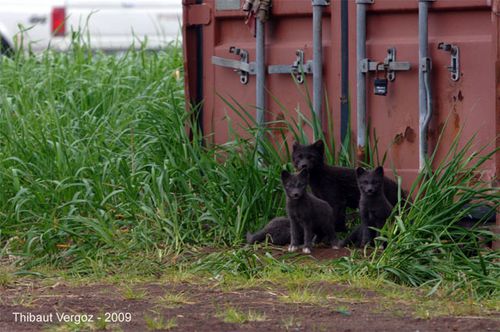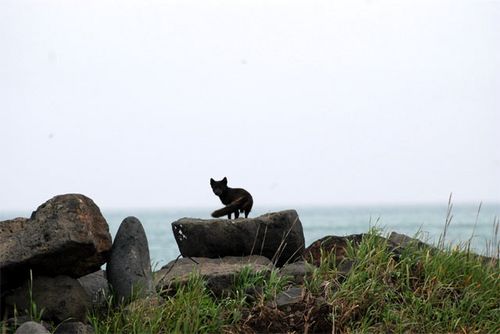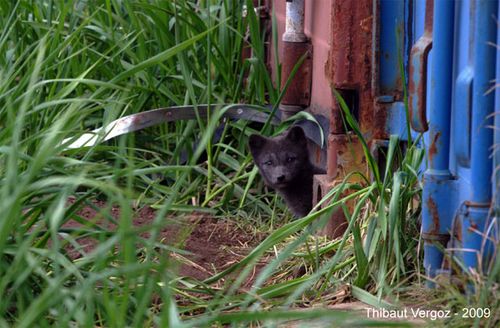The Pribilofs are home not only to millions of seabirds and seals, but also to two other native land mammals, the Arctic Fox and the Pribilof Shrew. The shrew, is a tiny little insectivore (Students: what does the word insectivore mean?) that lives nowhere else in the world but here on St. Paul Island. The shrews are hard to find, spending their time in the maritime tundra searching for insects and any other tiny animal that they can consume.
The foxes are a different story. As soon as you take a walk around town you're likely to find an Arctic Fox. They are quite used to people and tolerate our presence fairly well. That might be because they likely get most of their food by scavenging from humans. There is much in the way of scraps from the fishing industry out here and the foxes take advantage of the leftovers.
One of the scientists here, Thibaut Vergoz, a visiting researcher from France, took some excellent photographs of the Arctic Foxes that he saw right in town. Thiabaut was kind enough to share some of his pictures with me for the PolarTREC journal. Often the foxes will burrow under the large packing crates that are found all over town. I even saw a little family of fox living under the porch of a house a couple of doors down from the house where I am living. When you have Arctic Fox for neighbors, you know that you're living in the north country!

In addition to seeing the foxes around town, you often see them along the shoreline, searching for food delivered by the Bering Sea. Frequently fish and even larger food items like seals and occasionally even whales, will wash ashore, providing a bounty for the Arctic Fox. While out birding today, I observed this fox working the rocky shoreline and I snapped the photo below.

The seabird cliffs also provide a source of nutrition for the foxes. If a bird builds its nest too low to the ground, the foxes will climb up and snatch the eggs or the chicks right out of the nest. Typically it is the younger and less experienced birds that lose their young to the fox. They are presumably unable to compete with the more experienced birds that get the prime nesting spots out of the reach of hungry foxes.
Fledging time can also be a good time for the Arctic Fox and a bad time for the birds. Some birds like the Thick-billed Murre, actually leave the nest before they can fly. The less than half grown bird hops out of the nest and into the water and follows the male parent out to sea to be fed out on the open water. Of course, some of these birds don't make it out to sea. They jump from the nest , miss the water and die from the impact or are caught by the foxes waiting below.
If you ever come to visit St. Paul Island, be sure to be on the lookout for these interesting mammals. You are bound to see one before too long!



Comments